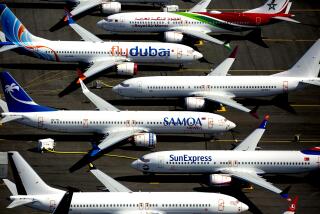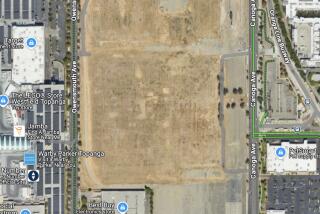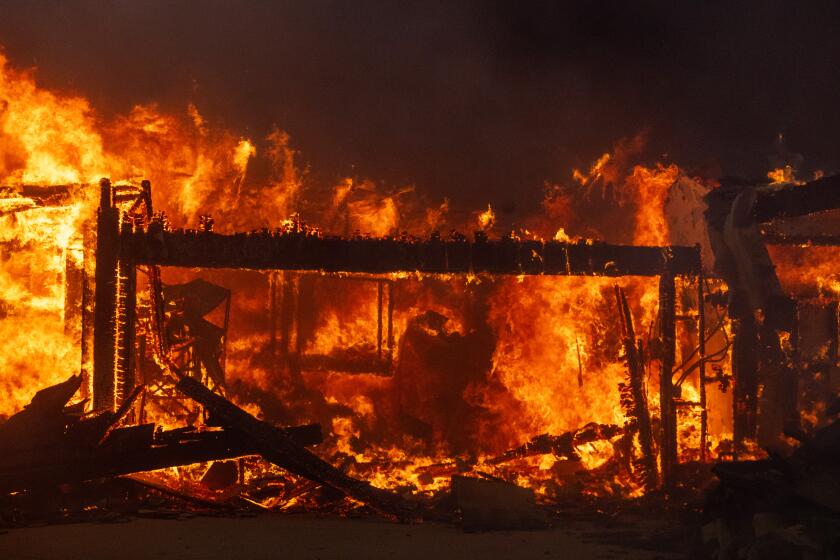Field Lab to Continue Work, New Owners Say
- Share via
SIMI VALLEY — Even after aerospace giant Boeing swallows Rockwell International’s aerospace and defense companies in a merger announced Thursday, the Rocketdyne division’s Santa Susana Field Lab will continue business as usual, the new owners say.
The field lab brings its new owners not only a rich role in aerospace history, but also a legacy of complex environmental problems.
The 2,700-acre, open-air test center near Simi Valley has been developing commercial rocket engines, an airborne laser for the Air Force and an earthquake-protection project for the Golden Gate Bridge.
“That’s part of our business, and it will continue to be,” Rocketdyne President Paul Smith said.
Layoffs are unlikely, Boeing officials said, but the company might reduce staffing slightly at Rocketdyne through attrition and transfers within the newly named Boeing North America Inc.
But Smith and Boeing declined to say what the merger means for the ongoing cleanup of chemicals and radioactive elements that have seeped into the ground and water over 49 years of heedless testing.
Nor would they say whether Boeing will accept potential liability for Rocketdyne’s pollution. This includes a lawsuit by the neighboring Brandeis-Bardin Institute over radioactive ground-water pollution and a continuing federal investigation into illegal chemical burning that killed two Rocketdyne scientists in 1994.
Rocketdyne officials have said they are working aggressively to clean up traces of carcinogenic solvents and radioactive substances that leached into the ground in and around the lab throughout years of rocket tests and nuclear reactor experiments.
The company has also been razing dozens of outdoor test stands, storage buildings and other structures around the lab’s rugged canyons so it can--as Rocketdyne put it--”return the site to nature.”
Boeing spokesman Paul Binder said some legal troubles may remain with the newly delineated Rockwell Corp., which retains the company name and a handful of existing divisions, such as the Rockwell Science Center in Thousand Oaks.
But he said details are not clear yet.
“Understand that we’re just putting together our transition team right now, and this deal does not even close until the end of the year,” said Binder, a spokesman at Boeing’s Seattle headquarters. “It’s way too early to talk about what are our individual plans for individual facilities.”
Dan Hirsch, head of an environmental watchdog group, replied Thursday: “That’s exactly what worries me. When you change hands, there is a substantial risk that responsibility gets further diluted.
“Boeing can claim they weren’t responsible for the contamination, and Rockwell can claim they no longer own it,” said Hirsch, director of the Committee to Bridge the Gap. “The bet around here is that it’s going to be declared clean when it’s not and be made into all sorts of businesses and homes, and not until the future will they find there’s still contamination. That’s my primary concern, that there’s a great incentive to do a slipshod job.”
Word of the merger spread quickly through the field lab and Rocketdyne’s Canoga Park headquarters Thursday.
As Rocketdyne workers punched in for each shift, they were handed press releases confirming what had been rumored for months--that Boeing will buy Rockwell’s aerospace and defense divisions by year’s end for $3.2 billion.
Smith also sent out e-mail messages telling employees of the merger, and made announcements by loudspeaker throughout the day.
Most Rocketdyne workers remained optimistic Thursday on their future as Boeing employees, veteran rocket engineer Bill Vietinghoff said.
Some, he said, had already witnessed a changing of the guard in 1967, when Rockwell acquired the test lab and Canoga Park production plant in a merger with North American Aviation.
“We were very optimistic about that, because Rockwell was acquiring a high-technology division,” said Vietinghoff, who joined Rocketdyne in 1953 to develop early liquid-fuel rockets for ICBMs and later manned space missions.
“I’m not one of those guys who’s worried about, ‘Will they lay me off? Will they move me to Seattle?’ ” he said. “We’ve got a lot of business these days, and nobody’s worried.”
In neighboring Simi Valley, Mayor Greg Stratton applauded the merger.
By buying into aerospace and defense facilities such as Rocketdyne, Stratton said, Boeing is acquiring businesses it never had before.
“This looks like a pretty good fit,” he said.
“That means they’re not going to change too much. . . . The smaller the purchase and the better the fit is, the less redundancy people can find,” and fewer excuses to lay off Rocketdyne workers, many of whom live in Simi Valley, Stratton said. “My hope is that this would keep most of the people in place, and the division would continue to operate.”
* RELATED STORIES: A1, D1
More to Read
Inside the business of entertainment
The Wide Shot brings you news, analysis and insights on everything from streaming wars to production — and what it all means for the future.
You may occasionally receive promotional content from the Los Angeles Times.










